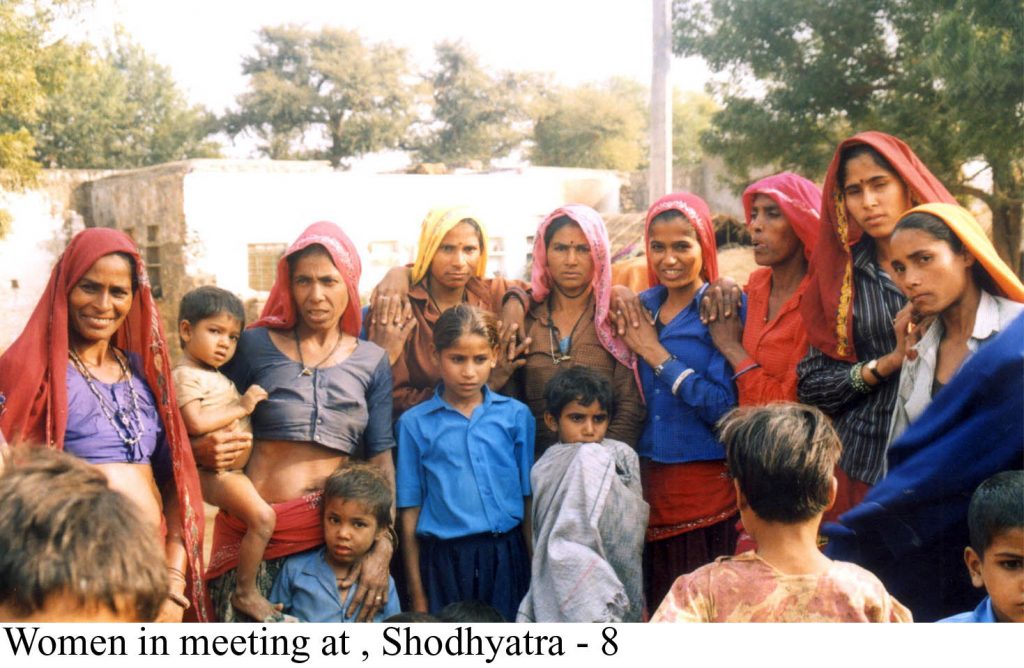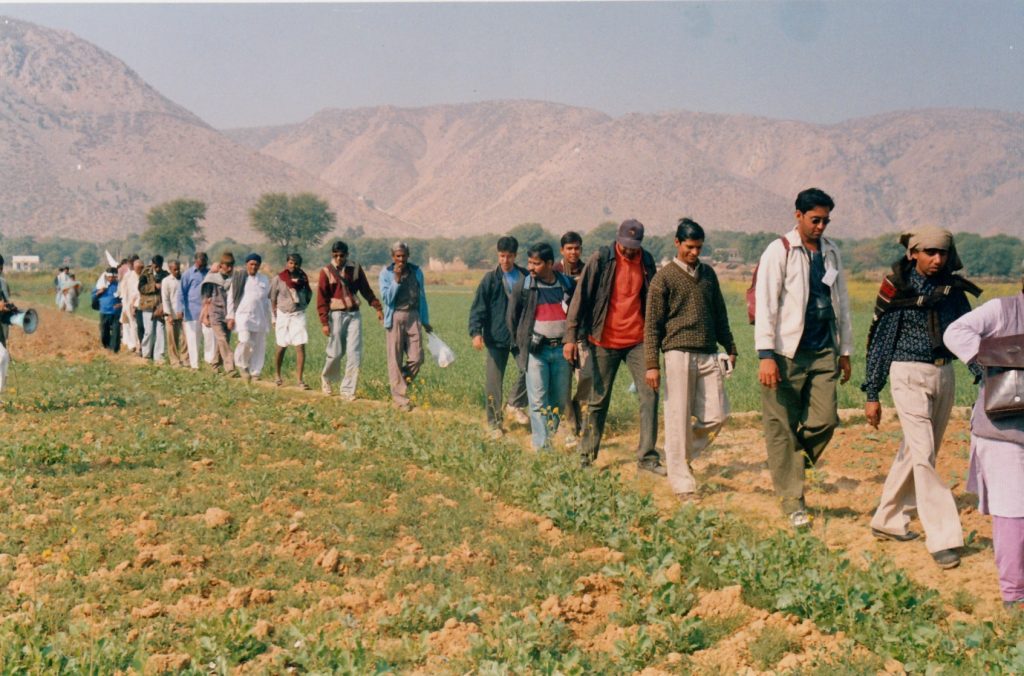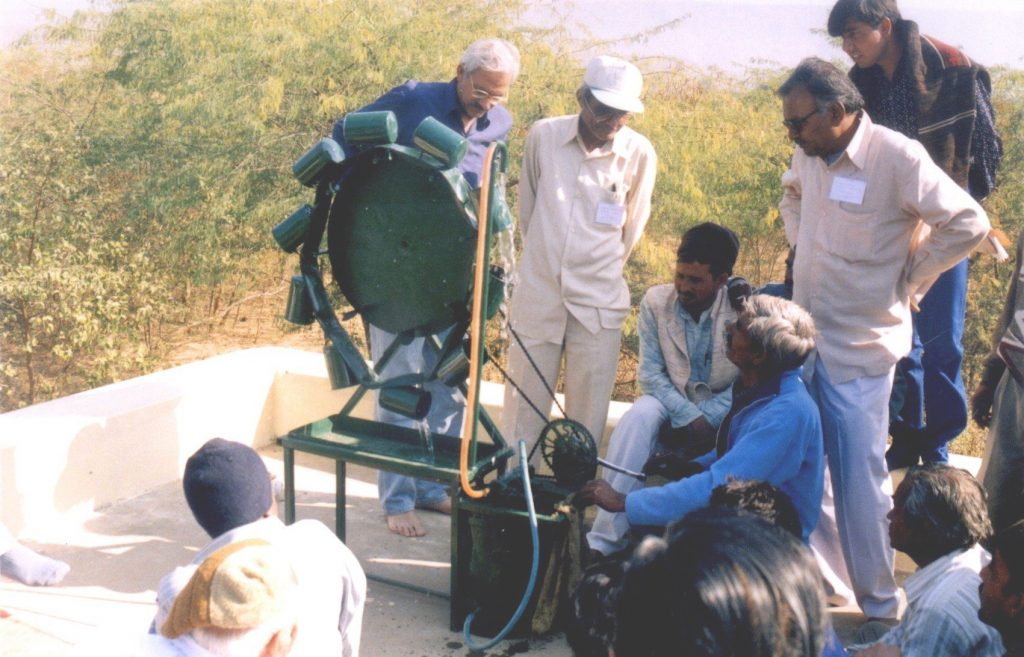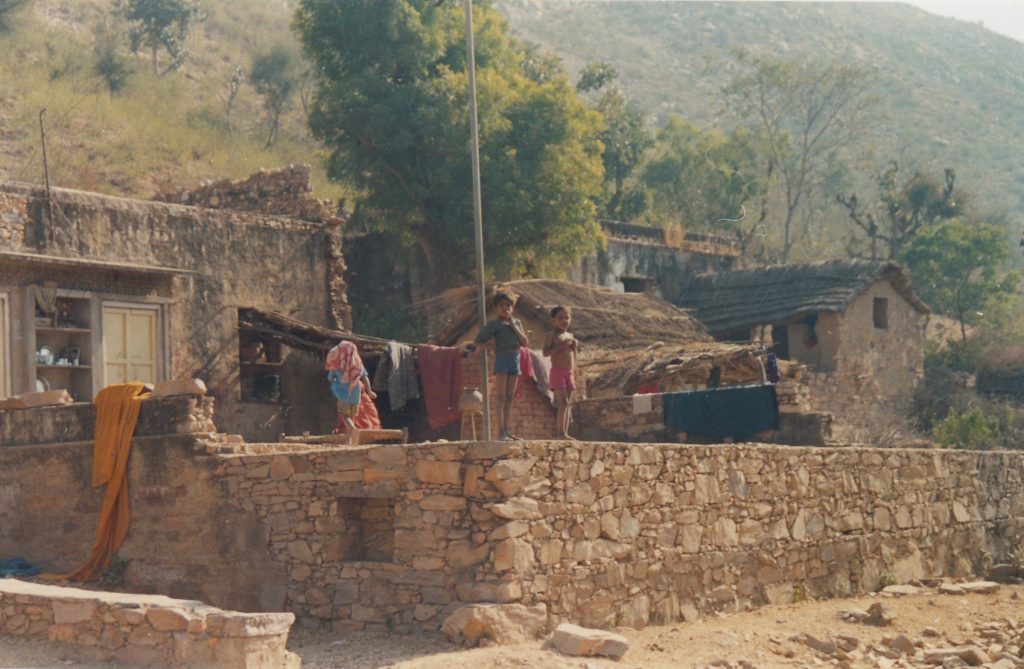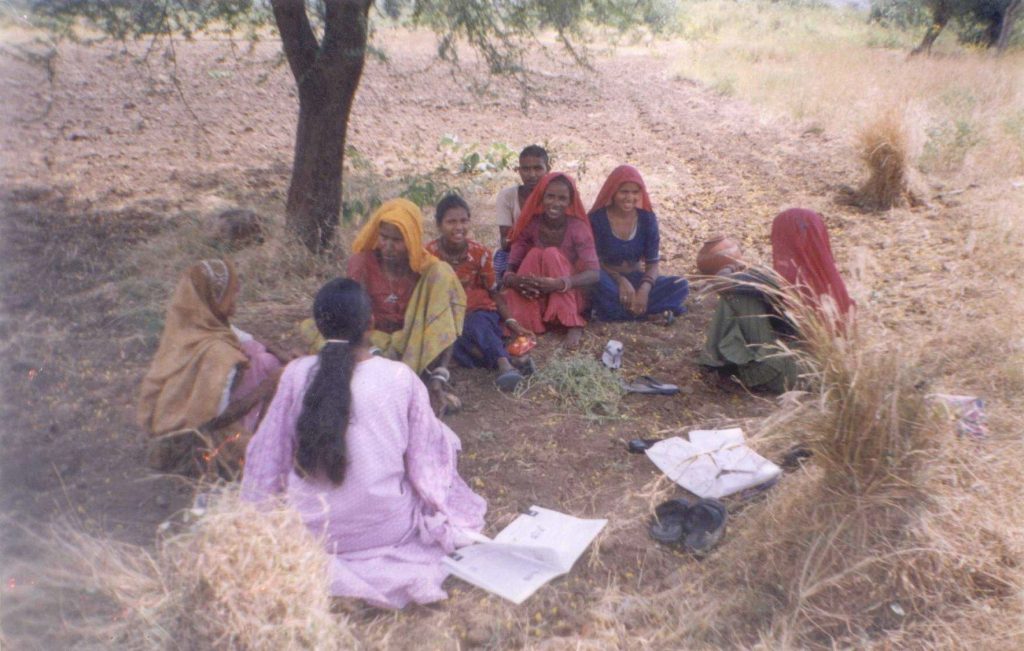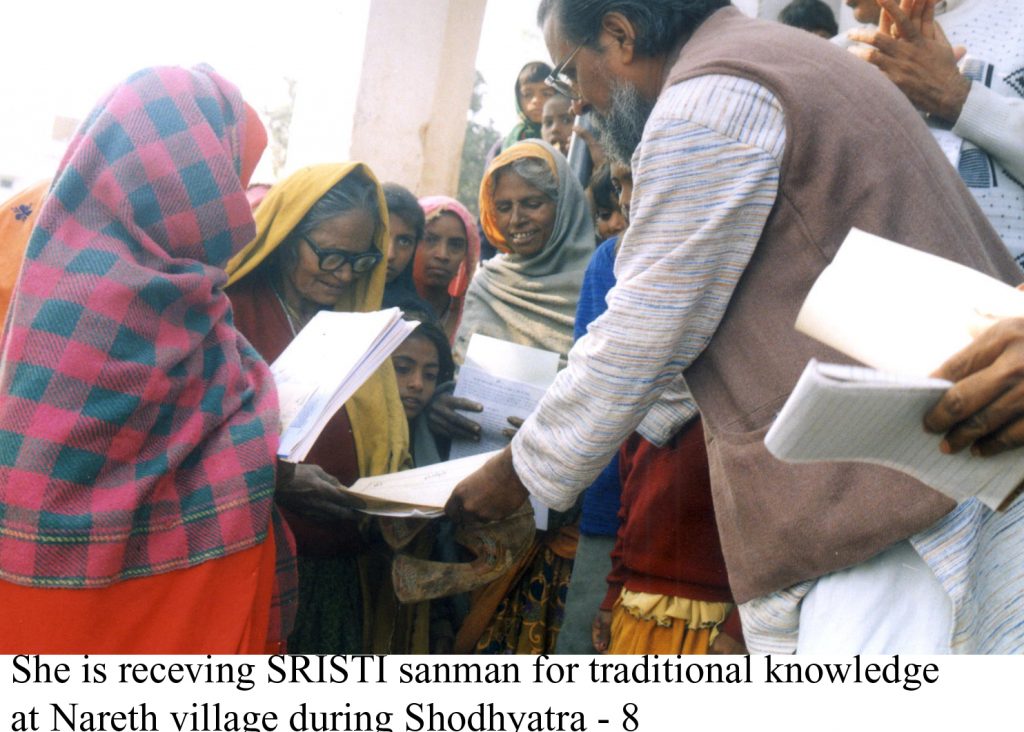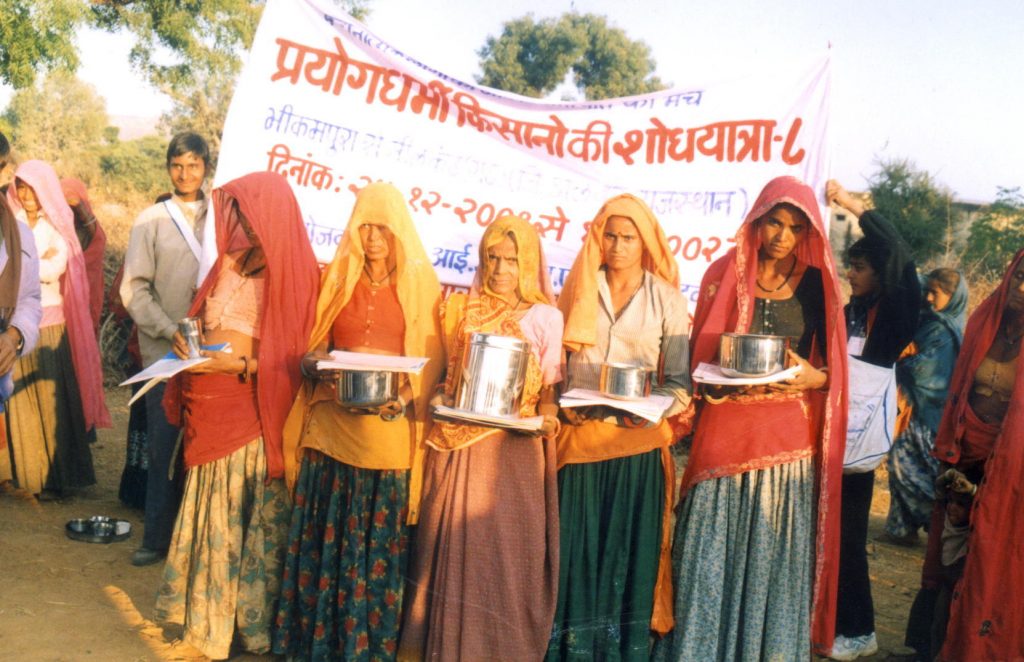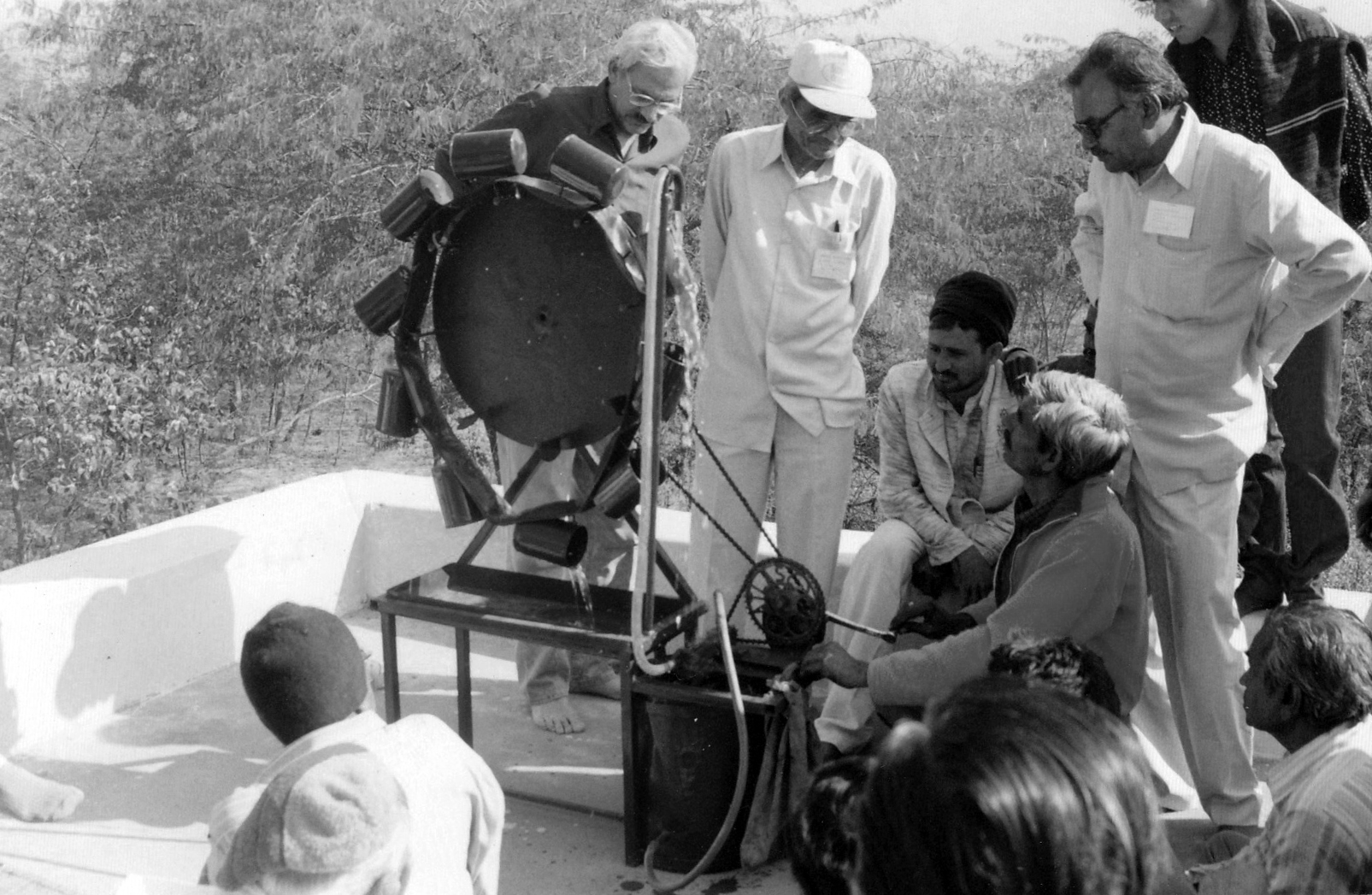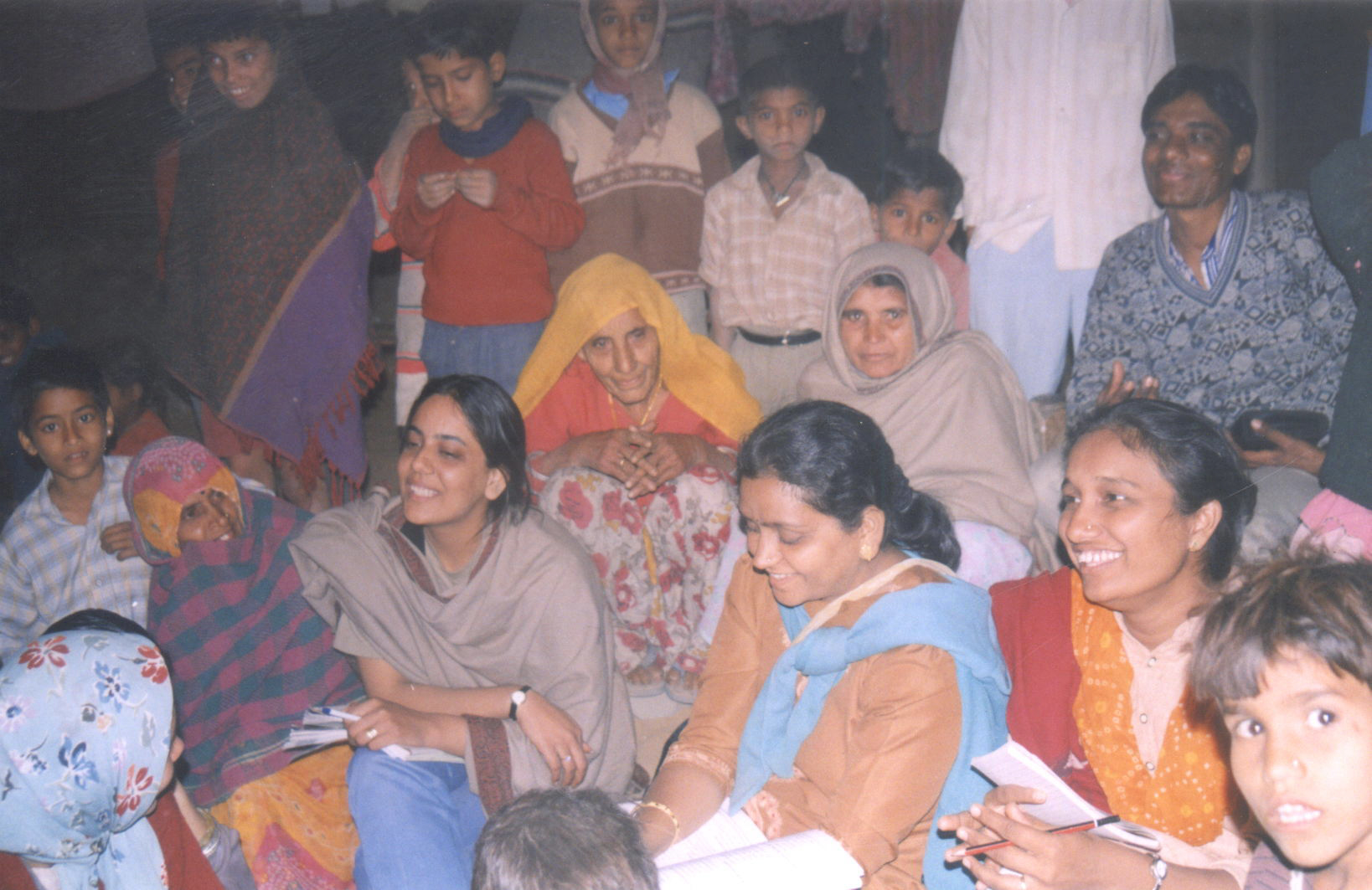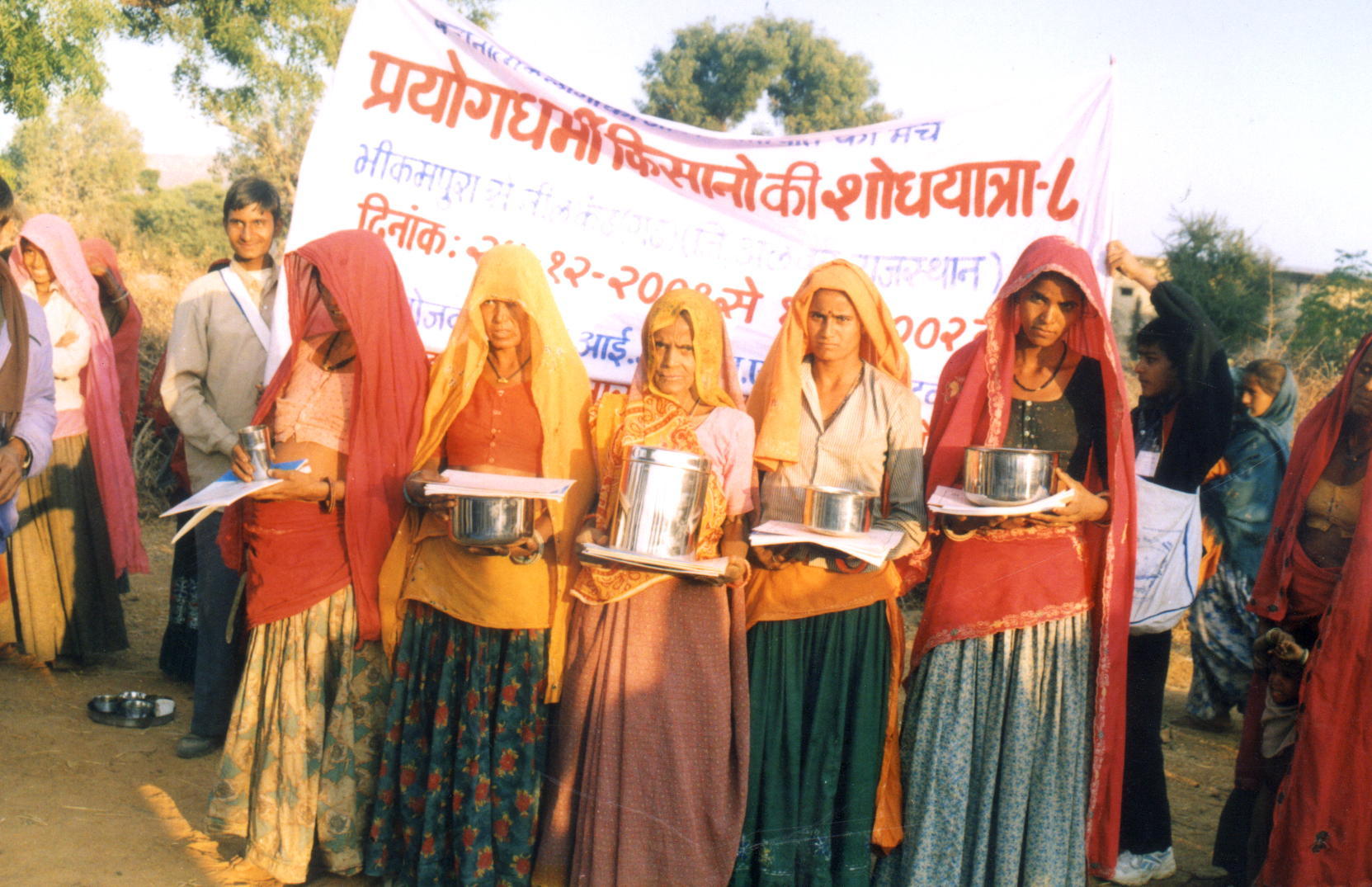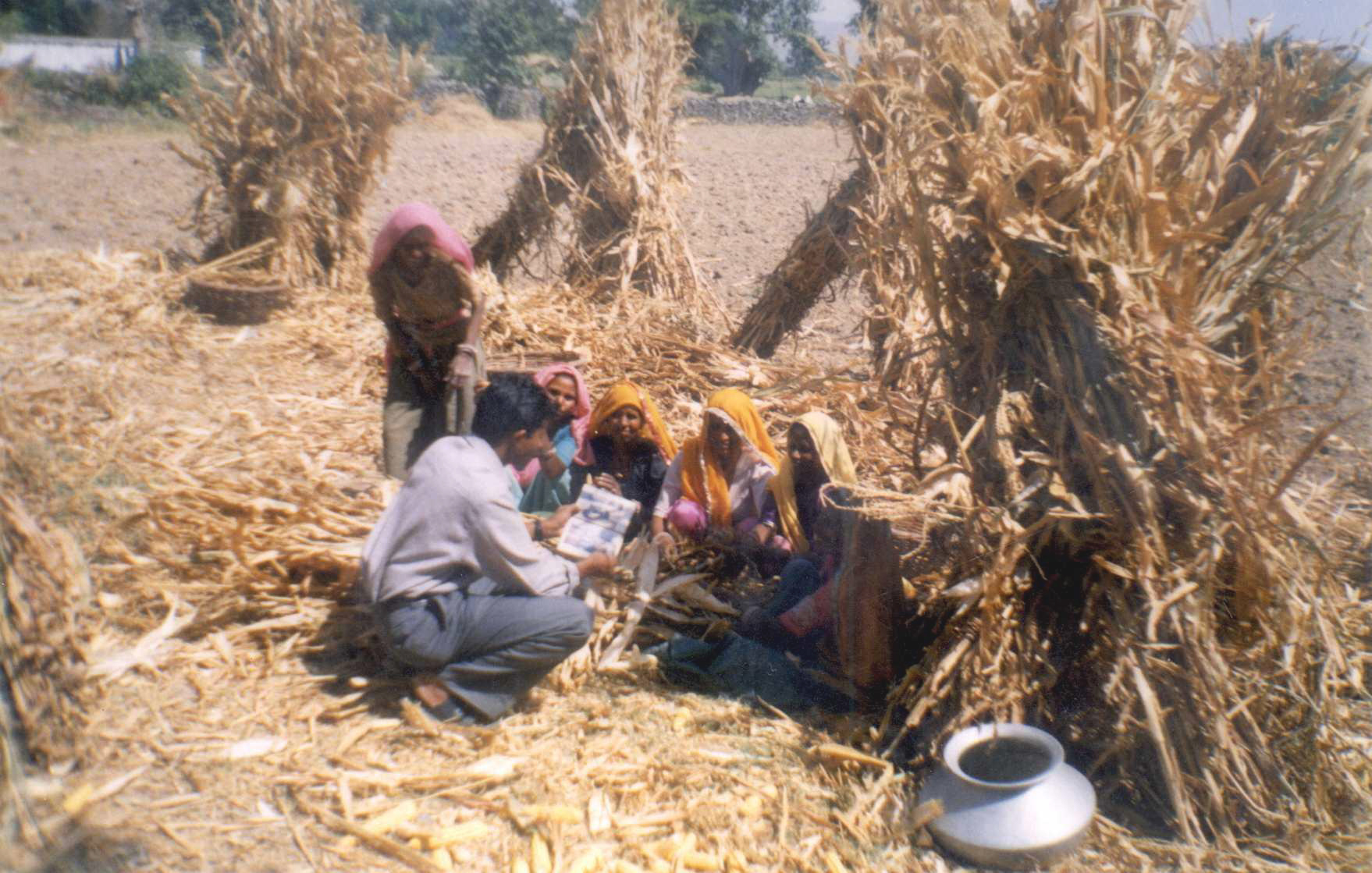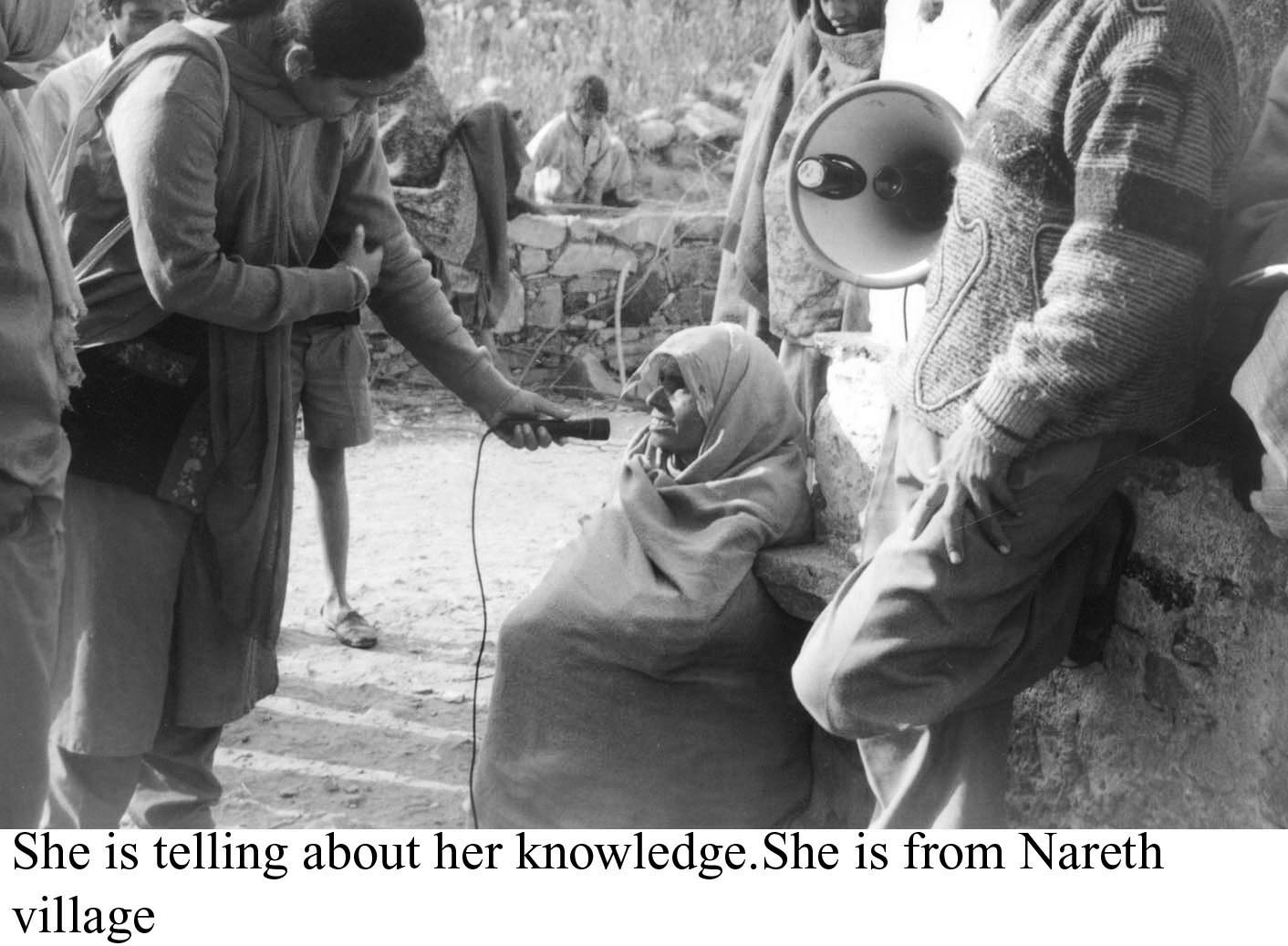Get Next Shodhyatra Update:
Phone:
079-27913293, 27912792
Email:
shodhyatra@sristi.org
LEARNING TO (UN) LEARN, 8TH SHODHYATRA
Bhikampura to Nilkanth, Alwar district of Rajasthan (December 24, 2001 to January 1, 2002)
The Aravali hill range presented hillocks and hills not easy to traverse, especially due to the dry undergrowth full of thorns and tricky pathways (but the local women seemed entirely at home in these, even with heavy loads on their head).
In all, we covered 23 villages, walking a total of 103 kilometres over a period of nine days. We were able to scout and honour 56 new innovators or traditional knowledge holders, 36 of them men and 20 women.
A DOUBLE YATRA
On the morning of the 24th, a meeting was held at the TBS office, where the yatra began with the usual message to the yatris: the yatra must be undertaken at two levels, the external and the internal. We knew that the external yatra would culminate in Nilkanth Mahadev. But where would the internal one lead each one of us to? This morning was also our introduction to Madan Singh Charan, a valuable ally throughout the yatra. Madan Singh is an eccentric from Rajgadh taluka in Alwar and was one of our major finds. He has ideas on a grand scale and has actually realised some of them. For example he tried solving the problem of erratic power supply by developing the idea of a dynamo that charges a battery by the pressure of a tubewell’s exhaust air. Now Madan Singh came in handy every time villagers in a meeting resisted the idea of anything new being possible in their area. We were able to challenge the villagers tendency towards passivity and indifference with the example of the innovators that accompanied us, but more importantly, with the examples we kept collecting through the villages. Look here, we said, this fellow belongs to your area, doesnt he? Listen to all that he has done. And tell us if he can do it, why cant you? This line of interrogation usually worked and people were prompted into at least asking questions, if not coming out with information themselves. Similar experiments about plant protection, growth promoters, animal care etc, were cited to enquire as to why local innovations were not news, why word of mouth was powerful enough to spread all sorts of gossip about politics and films but not about solutions to local problems. Why wasn’t local achievement, excellence and spirit of experimentation spreading far and wide?
One interesting case was Mulchand Mina in Bula ka Guvada, who went from being antagonist to protagonist. When the meeting organised in his village began, he resisted or opposed everything we said and seemed determined to play the spoilsport. His whole attitude seemed to be that all this talk of innovations and organic farming was so much nonsense. Eventually it came out that he himself had experimented in his field when pests in his brinjal crop almost drove him to despair. He used methi (Trigonella foenum-graecum) and milk against the pests and got good results. Then it was the turn of his fellow villagers to rail against him for not having revealed this when they were suffering from the same problem. An old farmer, sitting opposite poor Mulchand, shouted, “You are be-iman (dishonest person), you are a chor (thief), you solved such a problem and yet did not tell me.” This fight was one of the finest moments of the yatra. At long last, people were feeling deprived at not knowing about a local solution. This knowledge seemed to matter, at last. It was clear though that fear of ridicule more than selfishness that had kept Mulchand from revealing what he had done. No wonder that in such a social atmosphere, the independent diffusion of knowledge is a problem.
GYAN KE BAANDH
In this context the work of TBS in the area was of great help. TBS has revived the old water storage and conservation system with johads or small baandhs or dams. These have been built at regular intervals and are responsible for recharging the wells as well as bringing back to life five dead rivers. There is no water problem in the area despite no rain having fallen in the last four years, which speaks volumes for the kind of impact TBSs work has made. As far as the shodhyatra was concerned, since this base of activism already existed, we had something to build upon. We were able to talk of building gyan ke baandh, or knowledge-dams, to get the idea across.
A motif that we built into our dialogues with the villagers was precisely this: Look, we have conserved water. But what about the valuable knowledge that is getting lost. In most villages we found that youngsters did not sit with the elders, that there was not enough communication between the generations taking place. In all the primary schools where we held meetings we tried to make the teacher promise that he or she would reserve some time once every week for a wise and respected village elder to come and talk with the kids.
FROM INERTIA TO INNOVATION
The biodiversity contests organised in advance by SRISTIs field workers were very relevant to this issue. This was another way we could prompt kids to pay attention to the riches that surround them. Contests to name plants and cite their uses were organised in sixteen villages and almost 1500 students took part. What one young boy did is unforgettable. In a temple premises in Pratapgarh, a student named Giriraj Prasad Mina was given the third prize in a biodiversity contest for having named about 75 plants. Prof Gupta cited the example of a boy in another village who had named 271 plants and their uses. Giriraj piped up and said that they werent given enough time or else he could have named 500. He asked for a days time and promised to find us out himself with his list of 500 plants and their uses. We proceeded with the yatra. Sure enough there Giriraj was, the afternoon of the day after, having crossed five villages to find us to show us his list of 501 plants and their uses. We were, to say the least, overwhelmed. Why couldn’t we challenge more and more young kids with seemingly impossible goals and turn the tide of inertia into that of innovation?
As always recipe contests were also organised. In six villages we had the privilege of tasting dishes made of normally uncultivated plants. In the last village in the yatra itinerary, Nilkanth Mahadev, five completely different dishes were made from the same plant, bathua (Chenopodium album).
Besides, as mentioned in the editorial in the last issue (Honey Bee Vol 12 No 4), we tried our best to have the women attend the meetings and voice their knowledge and concerns, and we succeeded in this to a great extent.
Everything of course was not hunky dory. Even as we tried to bring the local women forward, some of our own women yatris had reason to complain of not enough attention paid to issues of their personal hygiene. There were other slightly jarring notes. As one yatri remarked, if people could not share their snacks, how did we expect them to share anything else? But there were major positives as well. In the third to last day, in the village of Sili Bawdi, the spontaneous decision of the villagers to form a Shodh Mandal, which would ensure that some part of land was reserved for experimentation every season, was very encouraging. This prompted us to further develop our idea of a Shodh Panchayat, which should hopefully take shape soon.
MUSIC, DANCE AND ARCHITECTURE
It is nice to conclude with a brief mention of our joyful flirtation with Rajasthani culture. In almost every other village, the women huddled together in a group and sang. In several villages they danced with the utmost abandon. In Hamirpur one grand old lady challenged our women shodhyatris to sing so that she could dance to the music, and dance she did! In Gopalpura we were witness to good old traditional Rajasthani theatre , albeit with a social message. We came across two outstanding individual musicians, one young and one old, in Prakashchand Mina and Gopinathji Jogi, who enthralled us with bhajans, folk songs and even traditional rowdy jokes!
We passed a mountain-cradled temple with a perennial kund, two old Rajput forts in Pratapgarh and Ajabgarh, a sacred grove populated by coconut trees, and appropriately enough the yatra concluded in Nilkanth Mahadev, containing a 5000 year old Shiv temple and other fascinating sculptures, remnants of a once thriving spiritual past.
FLICKR GALLERY
